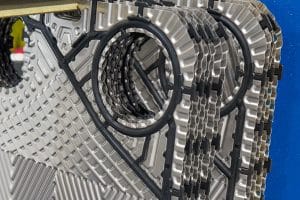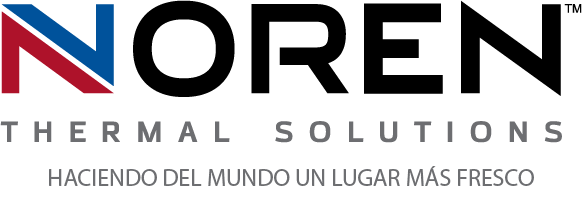 With any technological innovation or new iteration on existing technologies, one of the greatest selling points is an improvement in efficiency. The same is true for electrical thermal management solutions, though in that case, efficiency is often more challenging to accomplish. Applications that include more powerful, longer-running components housed in smaller, sleeker designs need cooling solutions that provide more efficient and reliable thermal management in increasingly limited spaces. Thanks to their advanced, highly customizable methods of transferring electrical waste heat, modern heat exchangers are often the ideal thermal management solution.
With any technological innovation or new iteration on existing technologies, one of the greatest selling points is an improvement in efficiency. The same is true for electrical thermal management solutions, though in that case, efficiency is often more challenging to accomplish. Applications that include more powerful, longer-running components housed in smaller, sleeker designs need cooling solutions that provide more efficient and reliable thermal management in increasingly limited spaces. Thanks to their advanced, highly customizable methods of transferring electrical waste heat, modern heat exchangers are often the ideal thermal management solution.
What efficiency means in modern thermal management
Like other forms of technology, modern heat exchangers’ goals include more than simply preventing electrical overheating. Most other solutions can accomplish the same goal. In addition, heat exchangers are designed specifically to address the common hindrances of traditional cooling solutions that make them more difficult to adapt to more advanced technologies. That includes space, as traditional solutions like air conditioning and air compressing units often require a lot of it, and energy, which they also need plenty of to continue operating consistently. In most applications, heat exchangers can provide high-performance electrical cooling continuously, within limited spaces and using minimal amounts of energy.
Innovative steps in heat exchanger design
To achieve optimal efficiency, today’s thermal management systems have to keep up with the increasing demands of advanced technology without increasing a company’s reliance on energy to power their systems. Heat exchangers, which utilize natural, easily containable methods of transferring waste heat, are able to achieve these goals for most of today’s types of applications. For optimal results, they can often be custom-designed, which includes comprehensive analysis, digital design, and ideally, collaboration between companies and heat exchanger design teams.
Customizing and prototyping for optimal results
Because of their easily manageable thermal management processes, heat exchangers are among the most commonly customized and highly efficient cooling solutions. That’s also thanks largely due to the advanced methods often employed to design them. Digital, collaborative design techniques allow for high levels of customization according to each application’s unique parameters. Innovative manufacturing techniques, including rapid prototyping, help ensure each heat exchanger design will operate as intended before it goes into production. This allows companies to implement more advanced thermal solutions faster, and streamline their operations with minimal delay.
For more information about designing thermal management with optimal efficiency in mind, call Noren Thermal Solutions in Taylor, TX, today at 866-936-6736.







